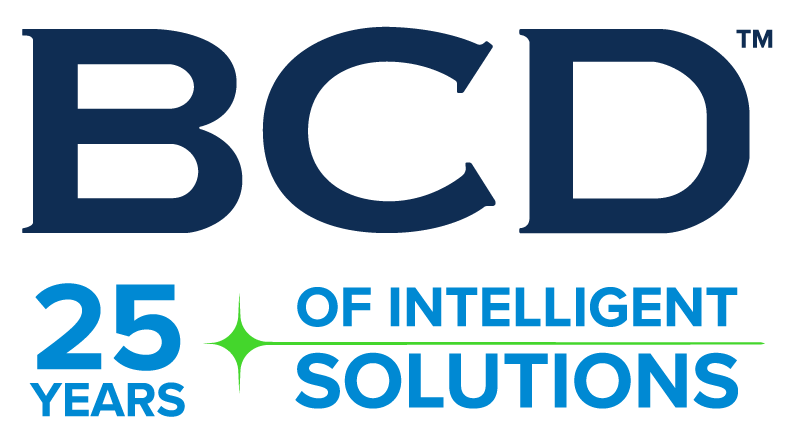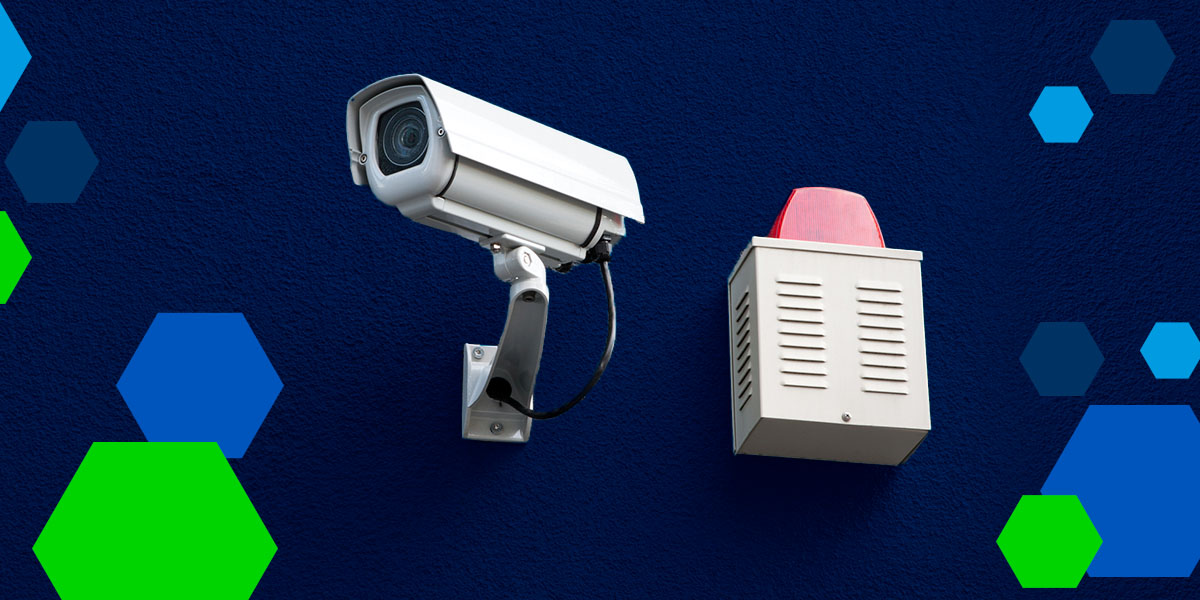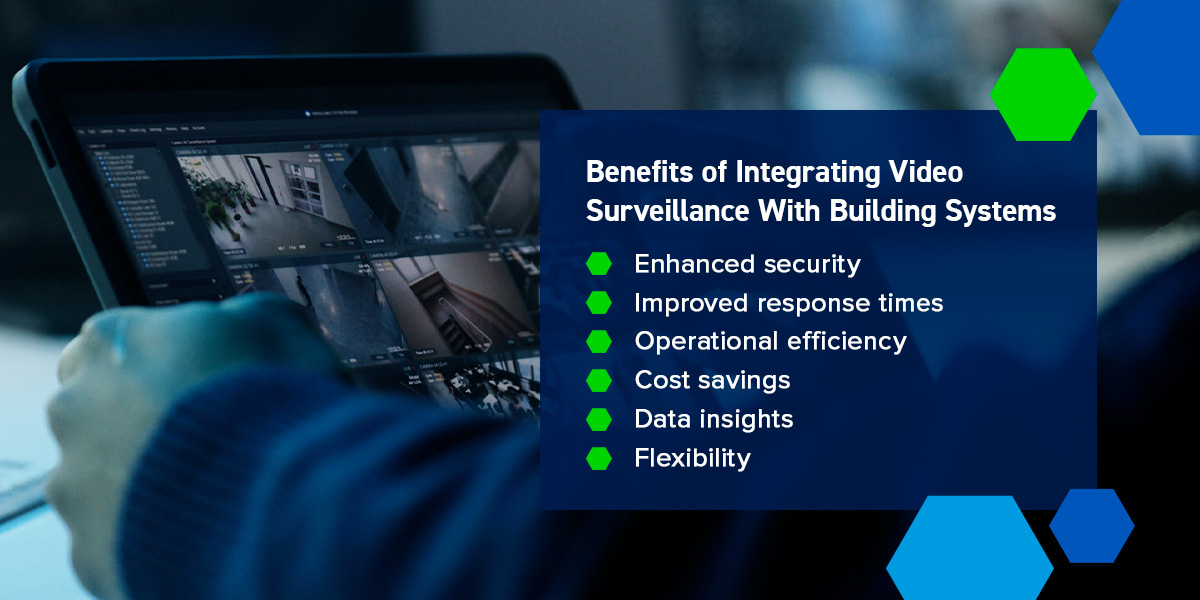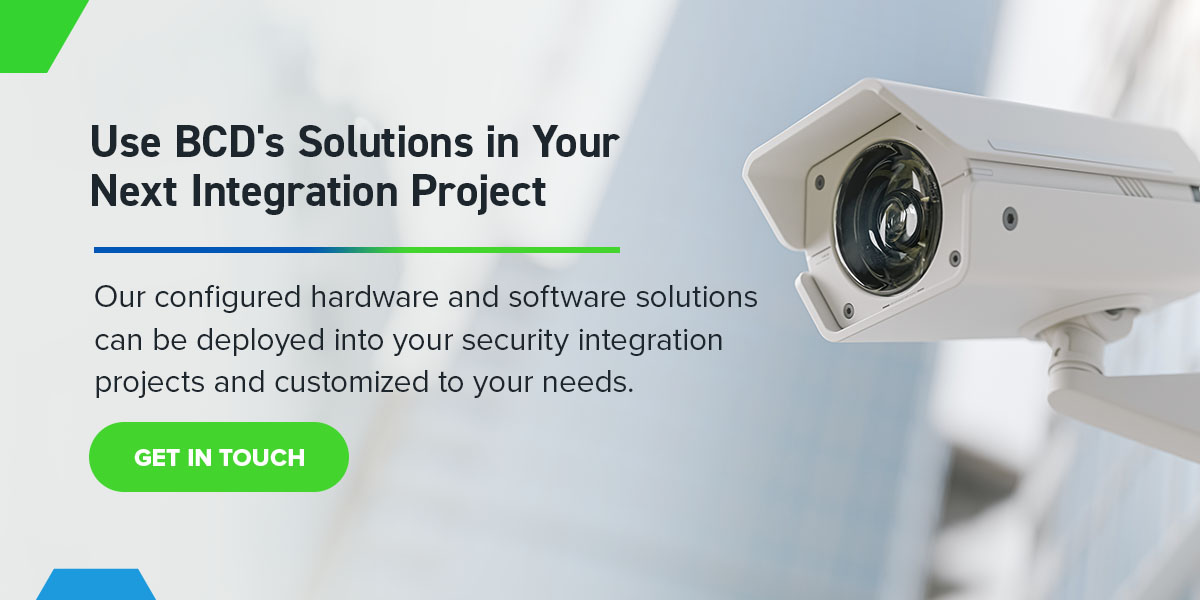Video security has evolved over the last few years from single-application technology to solutions that use the cloud and even artificial intelligence (AI) to meet business challenges. By leveraging integrated building security systems, facility managers can create a unified platform for managing security, access control and more, ultimately leading to a safer and smarter environment for staff.
How Are Security Systems Integrated?
Security system integration is the process of combining different security technologies and building systems into a unified and interconnected network. When you integrate these systems, they’re able to communicate with each other, share data and operate cohesively to enhance the overall security measures within a building or facility.
Here’s how integrated security systems typically work:
- These systems can share data in real-time, allowing for a more comprehensive view of security incidents and events.
- Facilities have centralized control and monitoring, which simplifies operations and improves response times.
- Integration enables the automation of certain security processes and generates alerts based on predefined rules.
- Integrated systems can provide deeper insights through data analytics and enable better decision-making.
- These systems are often scalable, allowing for potential expansion or modification as your security needs evolve.
To install or integrate new security systems, you need to meet a few requirements:
- Internet Protocol (IP): Your security devices need to be able to connect to the Internet.
- Open-source software: Although not the case for all systems, most brands operating on open-source software can be integrated.
- Single camera system: You need IP cameras that are compliant with the Open Network Video Interface Forum (ONVIF) so they can connect and work together from one integrated system.
- Hardwired system: For the most reliable security, ensure your system is hardwired with low-voltage cabling.
- Network infrastructure: Have a robust network infrastructure in place to support your IP cameras and ensure they can communicate effectively with the open-source software.
- Software security: Protect your IP cameras, network and open-source software from potential cyber threats by updating firmware and software regularly.
Key Integrated Building Systems
Both closed-circuit television (CCTV) and IP security camera systems can be combined with other security systems to provide a comprehensive security solution, depending on whether upgrades are needed. If you’re considering integrated CCTV security upgrades, assess your current security measures and identify potential challenges that you would like to address.
Some examples of key systems to add to your building include:
- Fire and life safety: Video surveillance systems are helpful in detecting fire or safety incidents. With integrated systems integrated fire alarm systems can trigger specific responses. For example, in the event of a fire, safety doors can unlock for prompt and safe evacuation procedures.
- Intrusion detection: When all security measurements are combined, including burglar alarm systems, you’re left with a more proactive system. If an alarm is triggered, the necessary authorities can be alerted while surveillance cameras provide real-time visual confirmation of the area.
- Access control: An access control and video security integration provides comprehensive security, especially where individuals often access secured areas. With an integrated alarm system, cameras can focus on the location if an unauthorized access attempt is made. Additionally, integrating access control with smart locks and intercom systems will allow you to manage and track visitor access with seamless communication from any location.
- Building automation: Use video feeds to provide floor access permissions through elevators or increase your visibility with strategically designed lighting. You can also activate certain appliances when needed to reduce unauthorized use and lower potential security vulnerabilities.
Benefits of Integrating Video Surveillance With Building Systems
Integrating video surveillance with current building systems offers several benefits:
- Enhanced security: By integrating video surveillance with access control, intrusion detection and alarm systems, you can create a comprehensive security network that provides real-time monitoring and alerts. These integrations improve your security measures overall.
- Improved response times: Integrated systems enable quicker response times to security incidents by allowing immediate visual verification of events and reducing false alarms. This also helps security personnel to react promptly to any threats or safety concerns.
- Operational efficiency: Having a centralized monitoring and control system with video surveillance alongside other building systems streamlines operations. It enhances efficiency and reduces the need for manual oversight.
- Cost savings: Integration can lead to cost savings in terms of reduced manpower required for monitoring, improved incident management and potentially lower insurance premiums due to better security measures.
- Data insights: Integrating video surveillance with building systems allows for data correlation and analysis, providing valuable insights for optimizing building operations and security protocols.
- Flexibility: Many integrated systems are scalable, allowing for easy expansion of modification as security needs evolve or building requirements change.
Technology and Integration Solutions
Security system integrations mainly work via the Internet, which means video data is exchanged between different systems. Instead of managing separate databases, you only need one management platform.
This is possible with multiple integration solutions:
- Cloud-based integration: Cloud video storage integration provides flexible software options to store, safeguard and access video surveillance footage on the cloud. It reduces infrastructure and maintenance costs and videos can be accessed remotely with an Internet connection.
- Unified security platform: A centralized platform integrates various building systems, such as video surveillance, access control and alarms, giving you a comprehensive view of building operations on a single interface.
- POS and inventory management integration: Integrating video security with point-of-sale (POS) systems helps with inventory management in retail environments. Through video analytics and transaction data, you can improve customer service while enhancing inventory control.
- Virtualized infrastructure: Virtualizing your hardware protects your system from data loss and lowers storage costs while enhancing system performance and optimizing resource allocation. This infrastructure offers a scalable option for building managers who want to make the most of their system resources.
- AI appliances: Incorporating AI-powered video appliances for video analytics enables automated monitoring, intelligent alerts and advanced security features. With improved threat detection, proactive security measures and increased operational efficiency, this intelligent automation solution can enhance your security response times.
Use BCD’s Solutions in Your Next Integration Project
Technology has changed the potential of security measures for company buildings and facilities. With the possibility of integrating different building systems with video security, you can improve a structure’s operational efficiency and overall security.
Whether you manage a small building with four cameras or a large facility with thousands, BCD’s products can enhance any security infrastructure. Our configured hardware and software solutions can be deployed into your security integration projects and customized to your needs.
Contact and partner with BCD for your next integrated security deployment.



